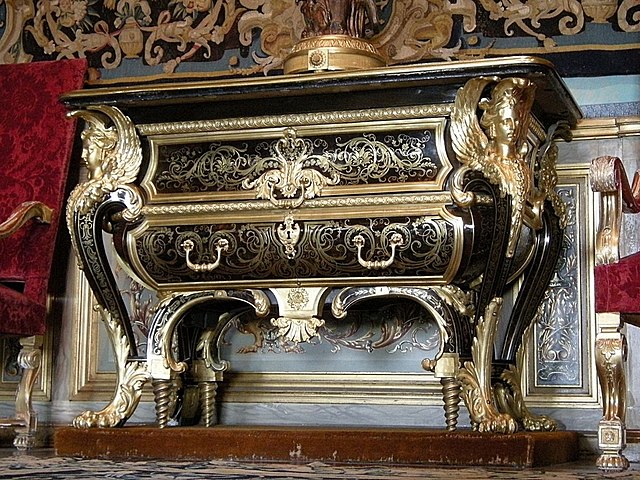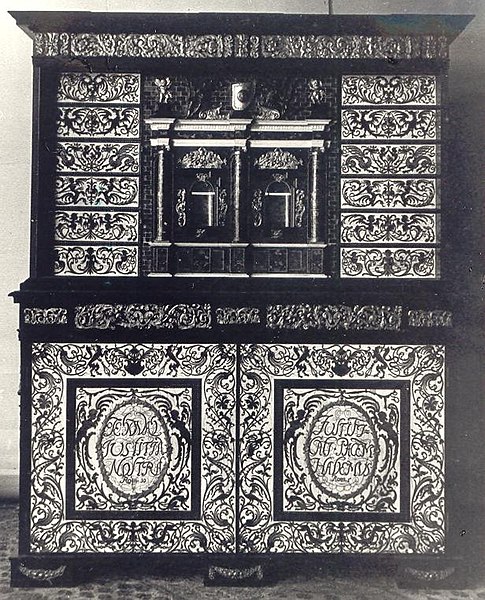A cabinet is a case or cupboard with shelves or drawers for storing or displaying items. Some cabinets are stand alone while others are built in to a wall or are attached to it like a medicine cabinet. Cabinets are typically made of wood, coated steel, or synthetic materials. Commercial grade cabinets usually have a melamine-particleboard substrate and are covered in a high-pressure decorative laminate, commonly referred to as Wilsonart or Formica.
Cabinet; by Francesco Del Tuppo; c. 1606–1623; oak and poplar veneered with various exotic hardwoods, with ebony moldings and plaques of marble, and various other materials; 59.1 × 96.8 × 35.9 cm; Metropolitan Museum of Art (New York City)
Commode by André-Charles Boulle at Vaux-le-Vicomte
Tortoise-shell cabinet of Polish king John III Sobieski, looted by the Germans from the Wilanów Palace during World War II
Crafted by Hughes Sambin (1570–1600), the double cabinet features the combination of architectural elements and relief carving that is characteristic of French furniture of the period.
In woodworking, veneer refers to thin slices of wood and sometimes bark that typically are glued onto core panels to produce flat panels such as doors, tops and panels for cabinets, parquet floors and parts of furniture. They are also used in marquetry. Plywood consists of three or more layers of veneer. Normally, each is glued with its grain at right angles to adjacent layers for strength. Veneer beading is a thin layer of decorative edging placed around objects, such as jewelry boxes. Veneer is also used to replace decorative papers in wood veneer HPL.
Book matched strips of veneer prior to application to a base surface
A continuous sheet of veneer coming out of a peeling rotary lathe






